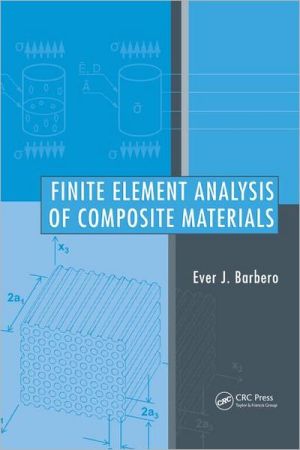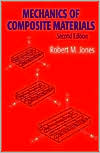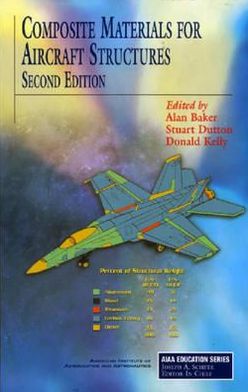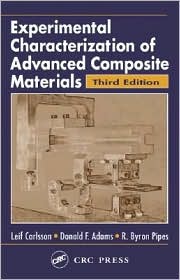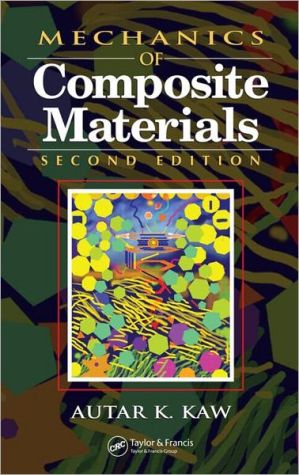Finite Element Analysis of Composite Materials
Designing structures using composite materials poses unique challenges due especially to the need for concurrent design of both material and structure. Students are faced with two options: textbooks that teach the theory of advanced mechanics of composites, but lack computational examples of advanced analysis; and books on finite element analysis that may or may not demonstrate very limited applications to composites. But now there is third option that makes the other two obsolete: Ever J....
Search in google:
Designing structures using composite materials poses unique challenges due especially to the need for concurrent design of both material and structure. Students are faced with two options: textbooks that teach the theory of advanced mechanics of composites, but lack computational examples of advanced analysis; and books on finite element analysis that may or may not demonstrate very limited applications to composites. But now there is third option that makes the other two obsolete: Ever J. Barbero's Finite Element Analysis of Composite Materials.By layering detailed theoretical and conceptual discussions with fully developed examples, this text supplies the missing link between theory and implementation. In-depth discussions cover all of the major aspects of advanced analysis, including three-dimensional effects, viscoelasticity, edge effects, elastic instability, damage, and delamination. More than 50 complete examples using mainly ANSYS™, but also including some use of MATLAB®, demonstrate how to use the concepts to formulate and execute finite element analyses and how to interpret the results in engineering terms. Additionally, the source code for each example is available for download online.Cementing applied computational and analytical experience to a firm foundation of basic concepts and theory, Finite Element Analysis of Composite Materials offers a modern, practical, and versatile classroom tool for today's engineering classroom.
MECHANICS OF ORTHOTROPIC MATERIALS Material Coordinate System Displacements Strain Stress Contracted Notation Equilibrium and Virtual Work Boundary Conditions Continuity Conditions Compatibility Coordinate Transformations Transformation of Constitutive Equations3D Constitutive Equations Engineering Constants From 3D to Plane Stress Equations Apparent Laminate Properties Suggested Problems References INTRODUCTION TO THE FINITE ELEMENT METHOD Basic FEM Procedure General FEM Procedure FE Analysis with CAE Systems Suggested Problems References ELASTICITY AND STRENGTH OF LAMINATES Kinematics of Shells FE Analysis of Laminates Failure Criteria Suggested Problems References BUCKLING Bifurcation Methods Continuation Methods Suggested Problems References FREE EDGE STRESSES Poisson's Mismatch Coefficient of Mutual Influence Suggested Problems References COMPUTATIONAL MICROMECHANICS Analytical Homogenization Numerical Homogenization Local-Global Analysis Laminated RVE Suggested Problems References VISCOELASTICITY Viscoelastic Models Boltzmann Superposition Correspondence Principle Frequency Domain Spectrum Representation Micromechanics of Viscoelastic Composites Macro-Mechanics of Viscoelastic Composites FEA of Viscoelastic Composites Suggested Problems References DAMAGE MECHANICS One-Dimensional Damage Mechanics Multi-Dimensional Damage and Effective Spaces Thermodynamics Formulation Kinetic Law in Three-Dimensional Space Damage and Plasticity Suggested Problems References A DAMAGE MODEL FOR FIBER REINFORCED COMPOSITES Theoretical Formulation Numerical Implementation Model Identification Laminate Damage References Bibliography DELAMINATIONS Two-Dimensional Delamination Delamination in Composite Plates Suggested Problems References APPENDIX A: TENSOR ALGEBRA Principal Directions of Stress and Strain Tensor Symmetry Matrix Representation of a Tensor Inner-Product Tensor Multiplication Tensor Inversion Tensor Differentiation APPENDIX B: STRAIN CONCENTRATION TENSORS APPENDIX C: SECOND ORDER DIAGONAL DAMAGE MODELS Effective and Damaged Spaces Thermodynamic Force Y Damage Surface Unrecoverable-Strain Surface APPENDIX D: NUMERICAL INVERSE LAPLACE TRANSFORM APPENDIX E: INTRODUCTION TO THE SOFTWARE INTERFACE ANSYS BMI3References INDEX
